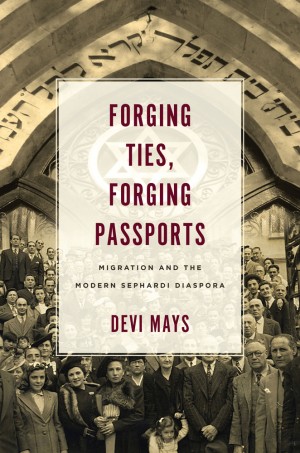Helping to both preserve and supplement little-known Holocaust narratives, Diana Cooper-Clark tells the stories of seventeen Holocaust survivors who escaped to Jamaica from Nazi-occupied Europe. Drawing from eyewitness accounts, artifacts, and other historical source materials, Dreams of Re-Creation in Jamaica purveys information about the interactions between Jamaican Jews and the refugees living in the Gibraltar Camp and the Uptown Internment Camp on the island. Cooper-Clark notes that her experience growing up in Jamaica influenced her decision to write about this subject. Shedding light on the history of both Sephardim and Ashkenazim survivors, this book brings together stories about World War II, Jewish refugees, and Jamaican Jews — narratives that might have otherwise escaped public notice.
The first story Cooper-Clark presents belongs to Dr. Rudolph Aub, a German Jew who traced his family history in Germany back eight centuries. He was barely able to escape the Nazis after Kristalnacht. His story, first recorded as an unpublished manuscript in 1988, was copied and passed down to Cooper-Clark in 1998 by Ernest de Souza, a contact of hers from Sha’are Shalom Synagogue in Kingston, Jamaica. Aub, his wife, Jula, and their children survived the war. Others, however, were not as lucky.
Drawing from photographs and personal effects provided by survivors and community members, the book highlights interesting details about the Jewish community of Jamaica and its inhabitants. Jenny Grishaver, a survivor who shared her memoir with Cooper-Clark, explains how she managed to hide the yellow Star of David Jews were forced to wear behind an armload of school books. She also explains how she hid diamonds, given to her by her father, in a brown beaded necklace. Photographs of both the Star of David and necklace are included in the book. Small items sometimes belie their significance.
A substantial study, written with a girth of both knowledge of and personal involvement with the subject material, the book constitutes a compelling narrative of considerable import. Cooper-Clark’s use of Modern Language Association citation might distract some readers accustomed to reading history texts, which usually use Chicago or Turabian style. So too, might the somewhat rhetorical style that introduces the study. Despite these technical variances from other historical accounts, Cooper-Clark fantastically weaves together seemingly disparate narratives, creating a cohesive whole. Moreover, she provides excellent source materials for researchers, scholars, and other professionals interested in Holocaust history. More writers should devote time to studying the histories of Jamaican Jews and the Holocaust, drawing inspiration from Cooper-Clark and her work.
Rachael Rose serves as a reviewer for the Jewish Book Council. She also works as a language Instructor at the Berlitz Language Center in Odenton, teaching Hebrew. On the side, she also tutors elementary school math and science.





